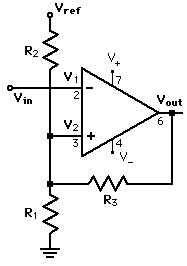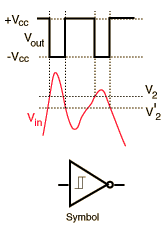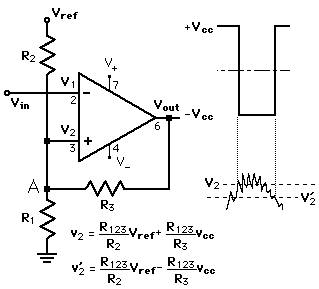The Schmitt Trigger
|
The Schmitt trigger is a comparator application which switches the output negative when the input passes upward through a positive reference voltage. It then uses positive feedback of a negative voltage to prevent switching back to the other state until the input passes through a lower threshold voltage, thus stabilizing the switching against rapid triggering by noise as it passes the trigger point. That is, it provides feedback which is not reversed in phase, but in this case the signal that is being fed back is a negative signal and keeps the output driven to the negative supply voltage until the input drops below the lower design threshold.
|
 |

|
Electronics concepts
Op-amp concepts
Reference
Simpson
Sec 10.19
| HyperPhysics*****Electricity and magnetism | R Nave |



